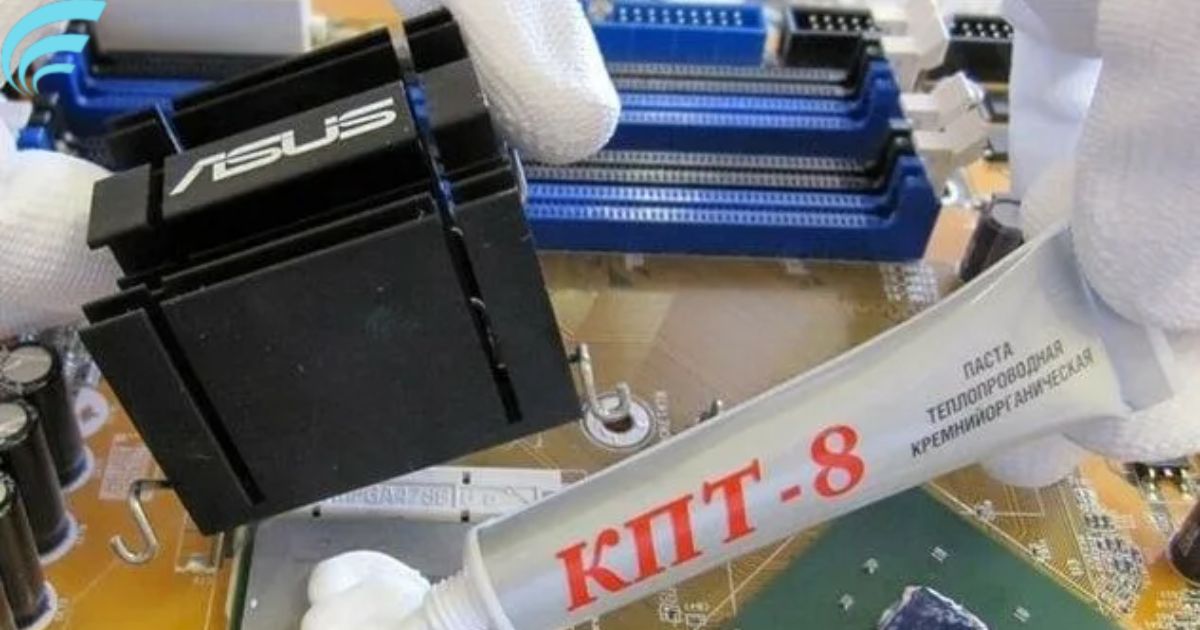Applying thermal paste to a GPU is a critical process that enhances heat transfer between the GPU core and the heatsink or cooler. It fills microscopic gaps and imperfections, ensuring efficient cooling. Proper application of thermal paste can lead to lower GPU temperatures, improved performance, and increased GPU longevity. It is an essential step for ensuring the GPU operates optimally.
Wondering if you should apply thermal paste to your GPU? Let’s explore the question, Do You Put Thermal Paste on a GPU? and ensure your graphics card runs at its best.
The application of thermal paste to a GPU is a crucial practice for optimizing its cooling and performance. Thermal paste fills the microscopic gaps between the GPU core and its cooler, ensuring efficient heat transfer. Properly applied thermal paste can result in lower GPU temperatures, reduced thermal throttling, and an extended lifespan for your graphics card. By understanding when and how to apply thermal paste, you can maintain the health and efficiency of your GPU.
Understanding Thermal Paste and Its Role
To begin, it’s essential to understand what thermal paste is and why it plays a critical role in the functioning of your GPU.
What is thermal paste?
Thermal paste, also known as thermal grease or thermal compound, is a heat-conductive material used to fill the microscopic gaps and imperfections between the CPU or GPU and its heatsink or cooler. Its primary purpose is to improve heat transfer between these two surfaces, allowing for more efficient cooling.
Why is thermal paste important for GPUs?
Thermal paste is crucial for GPUs because it facilitates the transfer of heat from the GPU core to the heatsink or cooler. Without thermal paste, air gaps or uneven surfaces can impede heat transfer, leading to higher temperatures, reduced performance, and potentially permanent damage to the GPU.
How to Apply Thermal Paste to a GPU
Applying thermal paste to your GPU can significantly impact its temperature and performance. Here is a step-by-step guide to ensure proper application:
Step 1: Gather Your Supplies
Before you begin, make sure you have the necessary supplies:
- Thermal paste: Use a high-quality, non-conductive thermal paste designed for CPUs and GPUs.
- Isopropyl alcohol: to clean the GPU and heatsink surfaces.
- Coffee filters or a lint-free cloth: for cleaning
- A small plastic spatula or card: To spread the thermal paste evenly.
- Paper towels or tissues:for wiping off excess paste.
Step 2: Preparation
- Safety First: Ensure your GPU and the PC are powered off and disconnected from any power source.
- Remove the GPU: Carefully remove the GPU from the PC case and lay it on an antistatic surface.
- Cleaning: Use isopropyl alcohol and a coffee filter or lint-free cloth to clean the GPU core and heatsink surfaces. Ensure they are completely free of old thermal paste and any debris.
Step 3: Applying the Thermal Paste
- Dispense Thermal Paste: Squeeze a small amount of thermal paste onto the GPU core. Be cautious not to over-apply, as excess paste can lead to inefficiency or mess.
- Spread Evenly: Use a small plastic spatula or card to evenly spread the paste over the GPU core. Aim for a thin, uniform layer that covers the entire surface.
- Position the heatsink: Carefully place the heatsink or cooler back onto the GPU, ensuring that it aligns correctly.
- Tighten the screws: Secure the heatsink or cooler in place, ensuring it’s evenly fastened to the GPU.
- Clean Excess Paste: Use paper towels or tissues to clean off any excess thermal paste that may have squeezed out from the sides.
Step 4: Reassembly
- Reinstall the GPU: Place the GPU back into your PC case and reconnect all necessary cables.
- Power Up: Power on your PC and monitor the GPU temperatures to ensure that the thermal paste is performing as expected.
Common Mistakes to Avoid

When applying thermal paste to a GPU, it’s essential to be aware of common mistakes and pitfalls to ensure optimal performance and longevity.
- Overapplication: Applying too much thermal paste can lead to reduced heat transfer efficiency. A thin layer is more effective.
- Incomplete cleaning: Failing to thoroughly clean the GPU core and heatsink surfaces can hinder thermal paste performance.
- Not securing the heatsink evenly: Uneven pressure on the GPU core can create hotspots and inefficient cooling.
Table: Quick Guide to Applying Thermal Paste to a GPU
| Step | Description |
| Step 1: Gather Supplies | Collect all necessary tools and materials. |
| Step 2: Preparation | Ensure safety, remove GPUs, and clean surfaces. |
| Step 3: Applying the Thermal Paste | Dispense, spread evenly, position the heatsink, tighten screws, and clean up excess paste. |
| Step 4: Reassembly | Reinstall the GPU, power up, and monitor temperatures. |
FAQs
Is applying thermal paste necessary for a GPU?
Yes, applying thermal paste to a GPU is essential for optimal heat transfer and cooling.
How often should I replace thermal paste on my GPU?
Typically, it’s recommended to replace thermal paste every few years or when you notice higher temperatures.
Can too much thermal paste harm the GPU?
Yes, excess thermal paste can hinder heat transfer, potentially leading to higher temperatures.
Is it possible to reuse old thermal paste when reassembling a GPU?
It’s best to use fresh thermal paste when reassembling the GPU for optimal performance.
What should I do if I accidentally apply too much thermal paste?
If you’ve applied too much thermal paste, wipe off the excess gently before reassembling the GPU.
Conclusion
In the realm of GPU maintenance and performance, applying thermal paste is a practice that should not be overlooked. It’s a simple yet crucial step that ensures heat is efficiently transferred, preventing overheating and enabling your GPU to perform at its best. By understanding the significance of thermal paste and knowing how to apply it correctly, you’re equipped to enhance cooling, extend your GPU’s life, and enjoy smoother, more reliable computing experiences. So, don’t forget that when it comes to your GPU, applying thermal paste is a must.
By following these steps and avoiding common mistakes, including techniques like applying thermal paste and How to Lower Junction Temp Gpu, you can unlock the full potential of your GPU. It’s all about achieving the ideal balance of temperature and performance, ensuring that your graphics card serves you well for years to come. So, remember to apply thermal paste, keep your GPU cool, and let your gaming and computing adventures continue without the worry of overheating.











